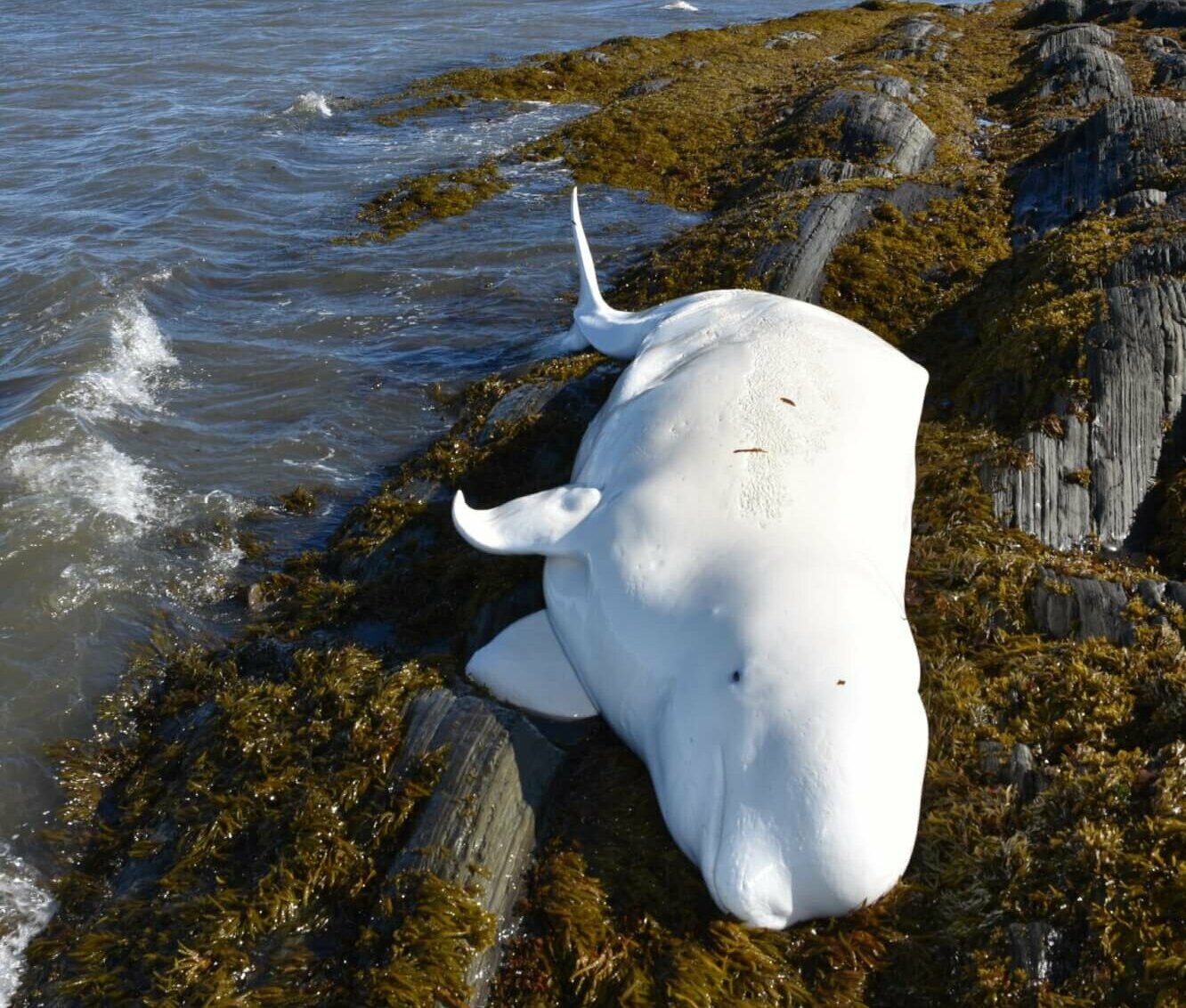Over the past year, 12 beluga carcasses were discovered adrift or on the shores of the St. Lawrence by the Quebec Marine Mammal Emergency Response Network (QMMERN). By way of comparison, 19 carcasses were found in 2021, 14 in 2020, 17 in 2019 and 12 in 2018.
What is most worrying in this report is the high number of females and newborns identified, adding to a phenomenon that has been playing out for the past decade or so. One of the carcasses was in too advanced a state of decomposition to determine the animal’s age and sex, but for the other individuals it was possible to confirm that there were seven females and four males. Of these, four were newborns, which is slightly below the average figure of 6.3 over the last 13 years, according to the Canadian Wildlife Health Network.
Expected results
Six of the 12 beluga carcasses were transported and necropsied by the team at Université de Montréal’s Faculty of Veterinary Medicine. So far, two preliminary necropsy reports have been submitted.
For an adult male found on June 5 in Les Escoumins, other tests will unfortunately be necessary to confirm the cause of death, as no anomalies were detected in the carcass. On the other hand, the second report contains more disturbing news: veterinarians noted a tear in the uterus of the female that was recovered on May 16 in Tadoussac. What’s more, this female was pregnant and had almost carried her fetus to term.
“Dystocia still seems to be an issue,” mentions Stéphane Lair, professor at Université de Montréal’s Faculty of Veterinary Medicine. The hypothesis is that dystocia, i.e. a complication arising during calving, might have caused the death of this female and her fetus. In the beluga’s St. Lawrence population, these cases of dystocia have been prevalent for several years now.
Shipping and boating traffic, contaminants in the water, fluctuating prey abundance and climate change are just some of the many factors that are having an impact on belugas. However, it is difficult to pin down the causes of this uptick in female and newborn mortality, as although several stressors are affecting the beluga, the contribution of each is not yet well understood, explains Robert Michaud, scientific director of the Group for Research and Education on Marine Mammals (GREMM) and QMMERN coordinator.
The carcass of another female nearing the end of gestation was also sent to the Faculty of Veterinary Medicine, but the results are not in yet.
First carcass for 2023
On March 26, a beluga carcass was found on a beach in Saint-Fabien in Quebec’s Bas-Saint-Laurent region. The young female, still grey in colour, showed significant lesions on the front of her abdomen. Samples were taken by one of the QMMERN mobile teams and the carcass was later transported to Université de Montréal’s Faculty of Veterinary Medicine for a necropsy. The causes of the individual’s death will be identified at a later time.
This first carcass of 2023 was recovered as part of the beluga carcass recovery program.
4 decades of dedication to an endangered species
This year marks the 40th season of the beluga carcass recovery program. Officially launched in 1983, this program has given rise to numerous research projects that aim to better understand the evolution of the St. Lawrence beluga population.
“Forty years of work, monitoring, concern and intense emotions for a magnificent species,” recalls Pierre Béland, one of the initiators of this large-scale recovery project. “Over 600 carcasses, thousands of chemical analyses, 300 necropsies. The scope of the project quickly expanded to include studies of the living population, including its genetics, behaviour, social life and critical habitat.”
Thanks to this program, a number of changes have already been made to protect this endangered population. “Our work on belugas has been one of the driving forces behind continued decontamination efforts,” explains Pierre Béland, alluding to the flame retardants (PBDEs) that were omnipresent in the St. Lawrence in the 1990s. As beluga research continues, other stressors affecting this threatened species may eventually be identified.
Today, volunteers and mobile teams working for the QMMERN are responsible for recovering beluga carcasses. If you happen to spot a marine mammal stranded on shore or adrift in the water, contact the QMMERN at 1-877-722-5346.








